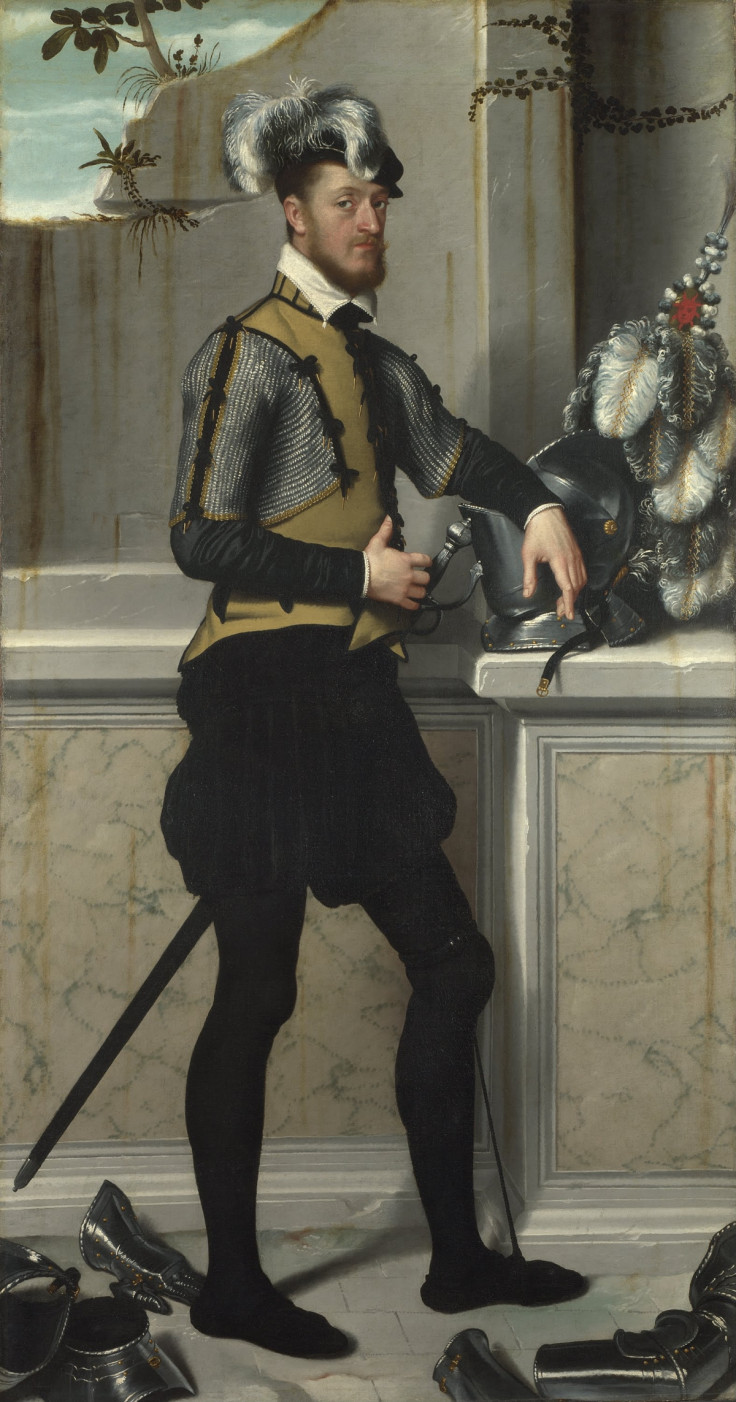The battle of 'wounded foot': Reflections on the Paris attacks at the National Gallery

In the central hall of the National Gallery in London hangs a 16<sup>th century portrait which probably does not feature on any of the greatest hits or must-sees lists wielded by visitors. The formal title of this somewhat muted painting by Giovanni Battista Moroni is "A Knight with his Jousting Helmet", but it is better known as "piede ferito", or "wounded foot".
The subject is a solemn and slightly weary-looking figure. He is standing up straight, but has a brace on his left leg which hints at an injury or minor disability. It looks like a scene from the end of a long day of battle.
"This is the private face of a leader, something I see quite often in my work as a coach," says Dr Eve Poole, author and associate of Ashridge Business School. Dr Poole and the gallery's head of education, Gill Hart, took a group of us on a tour of the gallery last week to point out the leadership lessons contained in some fine old paintings.
Portraits and other old masters not only tell us something about the times in which they were painted. They speak to us still today. Dr Poole charted a chronological course through different notions or concepts of leadership. Francisco de Goya's portrait of the Duke of Wellington, painted a year or two before Waterloo, displays a powerful man at his dominant best: a hero ready for the fight.
Holbein's "The Ambassadors", however, from three centuries earlier, emphasises brain over brawn, and hints at the need for reflection as well as action among leaders. Sassetta's "The Wolf of Gubbio", from the early 15<sup>th century, portrays St Francis taming a wild beast with empathy, or what some might now call "emotional intelligence". Amusingly, as we went further back in time fine art pointed us in the direction of rather more sophisticated and nuanced approaches to leadership.
The knowing and laconic eye of the art historian helped us see things that are not obvious to the amateur observer. Uccello's painting of St George slaying the dragon, Ms Hart pointed out, possibly suggests that the supposed "damsel in distress" shown in the picture may not really have needed rescuing at all. She was coping just fine. Here were some more challenging questions for aspiring leaders: are you really the hero you think you are? And is your leadership strictly necessary?
Perhaps most revealing (no pun intended) was Rubens' "The Judgement of Paris", which portrays the Trojan prince trying to decide which of the three goddesses – Athena, goddess of wisdom and war, Aphrodite (love) or Hera (marriage) – should be deemed the most beautiful and the recipient of a golden apple as a sign of their triumphant good looks.
Paris's decision will be a heavy one, leading ultimately to war and the fall of his city of Troy. And the look on his face foretells this. He is perturbed, doubtful, hesitant. It is a look that reminds the viewer of the expression on George W Bush's face as he was told of the attack on the World Trade Center in New York on September 11 2001, or the look on President Hollande's face at the Stade de France in Paris last Friday night.
James Mates, reporting for ITV news from that city at the weekend, told viewers that "these are the moments when leaders earn their money". Great artists already knew. Rubens certainly did.
My personal favourite discovery on this wonderful tour through the gallery was a quiet portrait by Sassoferrato, a 17<sup>th century artist, of "The Virgin in Prayer". Here was a still, silent figure conveying not just piety but also deep humility, head bowed, eyes closed, silent. How often do leaders get even 10 minutes of peace and quiet to think like this? And how many are capable of displaying a similar degree of humility?
Any time you can spend in the National Gallery is time well spent, whether you are a leader or not. There are lessons in every room, as well as timeless artistic achievement. There is nothing as topical as great art created centuries ago.
And while our expectations of leaders are necessarily high, sometimes impossibly so, before rushing to criticise we should perhaps remember the almost ghostly expression of Moroni's knight. He is a leader in some pain. He is fighting the lonely battle of wounded foot, as so many leaders ultimately are.
Stefan Stern is a business, management and politics writer. He writes for The Guardian and The Financial Times and is a visiting professor at Cass Business School.
© Copyright IBTimes 2024. All rights reserved.






